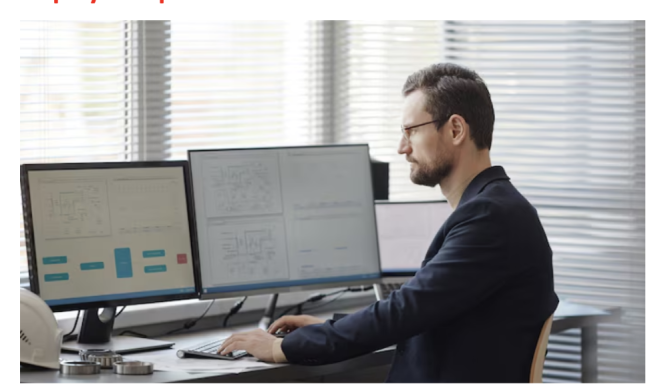- Change theme
Human Resource Management System: Enhancing Employee Experience

HRMS is a single place where everything related to employees is managed, from hiring to retirement, in an organised and friendly way.
08:50 12 August 2025
Have you ever thought about how companies manage hundreds or even thousands of employees while keeping everything smooth and stress-free? A Human Resource Management System, or HRMS, plays a big role in making this happen. It’s like a single place where everything related to employees is managed, from hiring to retirement, in an organised and friendly way.
What is a Human Resource Management System
A Human Resource Management System is a digital platform that helps in managing all employee-related activities in one place. It covers many areas such as recruitment, payroll, attendance, performance, training, and employee growth. Instead of using different tools for each task, HRMS combines them, which makes the work simple and well-organised for both HR teams and employees.
With HRMS, everyday HR tasks become faster because many things are automated. Salary processing, leave approvals, and even sending reminders for important activities can be done without much manual work. This means HR teams can spend more time on planning and improving employee satisfaction.
Easy Hiring and Smooth Onboarding
Recruitment becomes much easier with an HRMS. It can help in posting job openings, tracking applications, and scheduling interviews. Once a candidate is selected, onboarding becomes quick because forms, documents, and initial training details can be managed online. This gives a warm welcome to new employees and helps them settle in quickly.
Simple Payroll and Attendance Tracking
Accurate payroll is important for building trust between employees and the company. HRMS keeps track of attendance, leave, and working hours, making payroll accurate and timely. Employees can check their salary slips, leave balance, and working hours whenever they want, which adds transparency to the process.
Clear Performance Management
Here, the human resource management system allows managers to set clear goals for each employee and track their progress. This makes it easy for both employees and managers to understand expectations. Regular feedback and recognition help employees stay motivated and perform better. Training sessions and skill development programs can also be planned through the system, giving employees opportunities to grow in their careers.
Better Communication with HR
Good communication between HR and employees is important for a happy workplace. HRMS gives employees a simple way to ask questions, submit requests, and get quick replies. Many systems also have mobile access so employees can use them anytime, which is helpful for those working away from the office.
Centralised Data for Better Planning
With HRMS, all employee information is stored in one place. This helps HR teams and managers to get a clear view of the workforce. They can plan for future hiring, training needs, and other important activities easily. Having all the information together also reduces errors and saves time.
How HRMS Improves Employee Experience
A good employee experience means that people feel valued, supported, and connected to their work. HRMS plays a big role in achieving this by making everyday processes easy and transparent. Employees can manage many tasks themselves, such as applying for leave, checking salaries, and enrolling in training programs. This gives them more control and reduces waiting time.
It also helps managers spend less time on paperwork and more on building a positive work environment. When everything is well-organised, employees feel more confident and satisfied with their workplace.
Boosts Productivity
By automating routine work, HRMS allows HR teams and managers to focus on important matters. Employees save time by accessing information and completing tasks without delays. This results in better productivity for everyone.
Encourages Employee Growth
With performance tracking and training management in HRMS, employees get regular chances to improve their skills. Managers can see progress and suggest training programs that match an employee’s career goals. This makes employees feel supported and motivated to grow.
Builds Trust and Transparency
When processes like payroll, attendance, and leave approvals are clear and easy to access, employees trust the system more. They know that everything is recorded and handled fairly, which improves the bond between the company and its employees.
Why Companies Prefer Using HRMS
More and more companies are adopting HRMS because it makes work smooth and helps create a positive workplace. From hiring to retirement, it keeps every detail organised. It also supports different working styles, including remote work, by allowing employees to connect with HR services from anywhere.
It gives a complete picture of the workforce, making it easy to plan ahead. For example, companies can quickly see if they need more staff, if a particular department needs training, or if someone is ready for a promotion.
Supports Future Planning
HRMS can show trends in hiring, performance, and skill development, which helps companies prepare for future needs. This planning ensures the company always has the right people in the right roles.
Promotes a Positive Workplace Culture
When employees find it easy to get information, complete processes, and communicate with HR, it creates a sense of comfort. They feel supported and valued, which encourages loyalty and satisfaction.
Final Thoughts
A Human Resource Management System is more than just software for HR teams. It is a complete platform that improves the way employees experience their workplace. By making everyday tasks simple, transparent, and well-organised, HRMS helps both employees and companies grow together.
With the right use of HRMS, companies can create an environment where employees feel happy, supported, and motivated to give their best. This not only benefits the people but also helps the company succeed in the long run.
